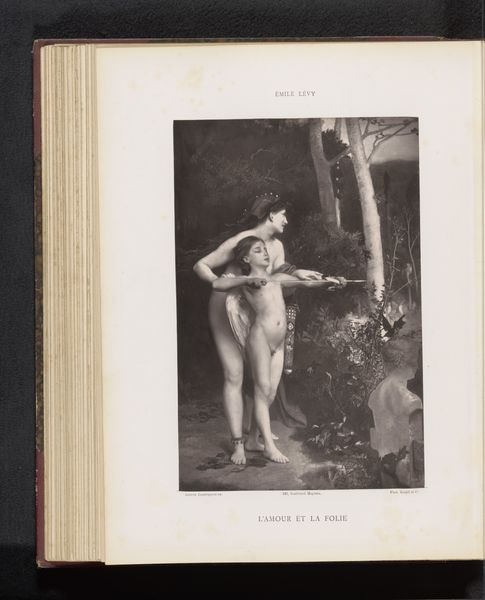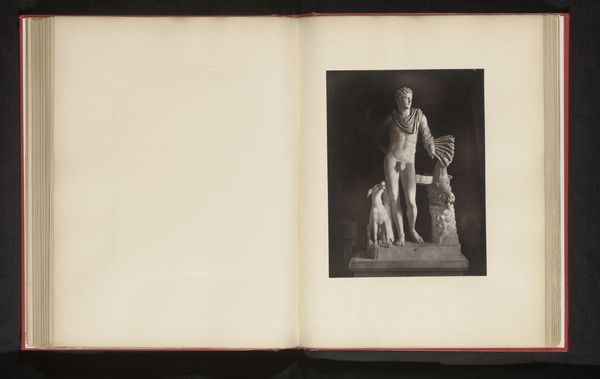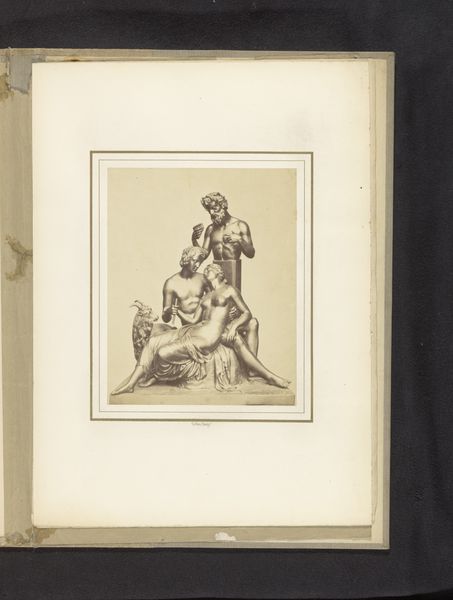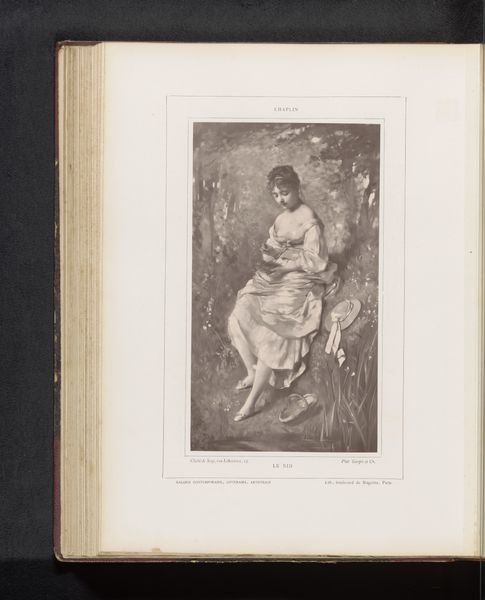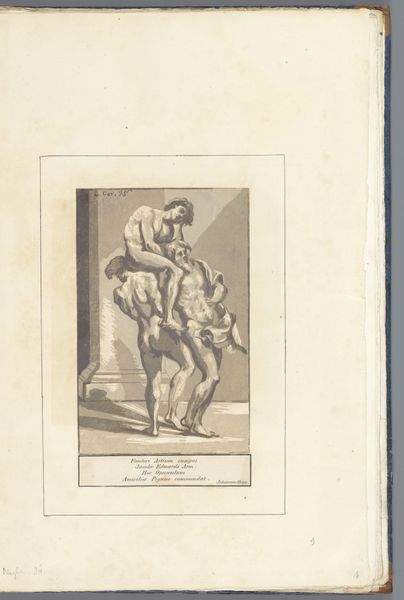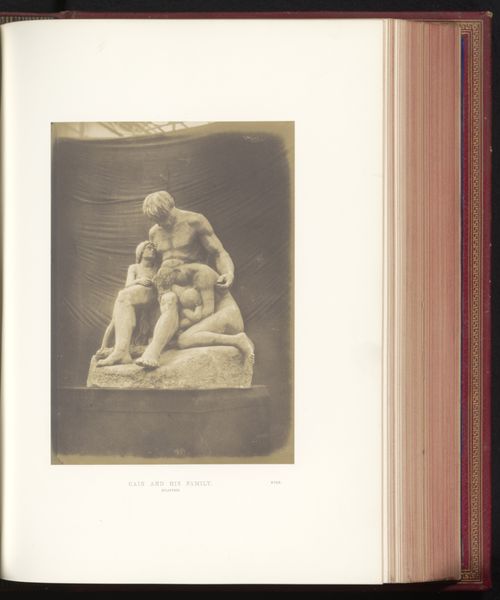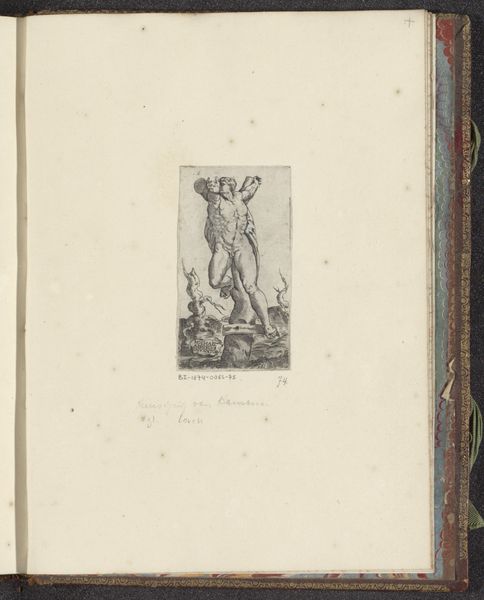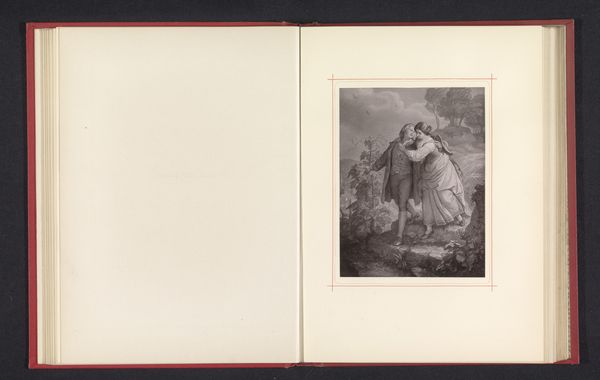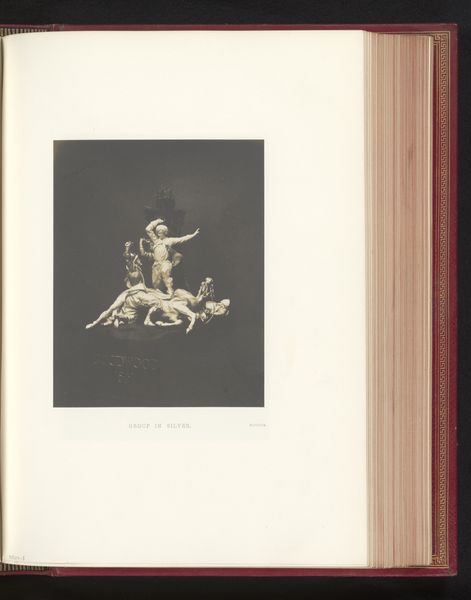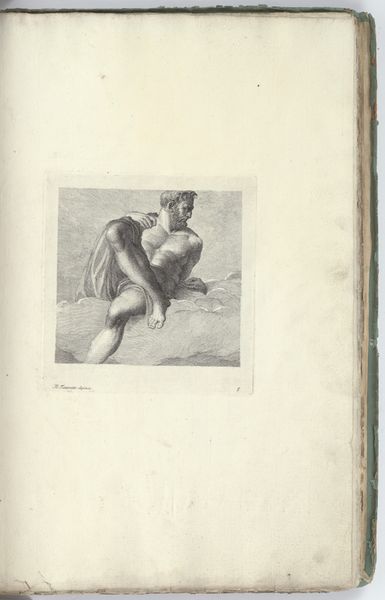
Dimensions: height 239 mm, width 192 mm
Copyright: Rijks Museum: Open Domain
Curator: Welcome. Before us, we have a reproduction of Jean Auguste Dominique Ingres’s "Le Sphinx," dating back to before 1878. It's rendered as an engraving, primarily on paper. Editor: Immediately striking is the stark contrast! The somber gray washes lend the figures a solemn, almost ethereal quality. And is that a rendering of Oedipus and the Sphinx, maybe? Curator: Indeed! Note the sinuous lines of Oedipus's body—the musculature precisely articulated. Ingres was, after all, a master of line and contour, deeply influenced by classical sculpture. The almost severe restraint in the coloration directs our focus purely onto the composition itself, allowing the dynamic interplay between the two figures to come to the fore. We might describe the arrangement as almost confrontational yet elegantly balanced by use of space and body arrangement. Editor: I’m drawn to the allegorical undertones here. Oedipus, nude yet armed, representing the vulnerable but intellectually equipped hero. The Sphinx—a chimera, a symbol of deceptive power. Ingres seems to be exploring a power dynamic and what looks like gender disparity here. It appears almost predatory but is rather tame. And I can’t ignore the distinct Eurocentric gaze evident in this interpretation of a classic myth; in its time this could easily serve to portray power imbalance along with male sexual entitlement. Curator: That may certainly be a valid modern contextual reading. The Neoclassical movement was devoted to ideas, themes, and composition derived from classical Greek and Roman artwork that favored structure and concept, an interest in philosophical reflection or, as in this image, allegory. Look how he skillfully guides the viewer’s eye. It is a study in controlled execution of form and content. Editor: Fair enough. What resonates most with me is the enduring conversation this work inspires about societal constructs of intellect, power, gender, and privilege. Art from the past doesn't exist in a vacuum and affects social understanding even now. Curator: A truly astute point. I suppose this piece provides ample opportunity for both focused study of artistic form and examination of history and its implications in social perception. Editor: Precisely, and hopefully encourages our audiences to continue the discussion beyond our brief words today!
Comments
No comments
Be the first to comment and join the conversation on the ultimate creative platform.
